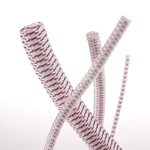
Successful book publishers market their books using an assorted mix of promotional media. A powerful communication mix includes publicity, advertising, sales promotion, content marketing, and personal selling. Many publishers focus on publicity and avoid advertising — print media advertising in particular. In part that is a cost decision, since it has become easier and more affordable than ever to market online, but some publishers also discount print magazines and newspapers as mediums of the past. In reality, a strategic use of print and digital can most effectively and efficiently increase sales.
Technology has made it easier and cheaper than ever for small book publishers to reach their prospective buyers through advertising. Websites, social media sites, and email campaigns offer immediacy and interactivity. But traditional print media advertising retains many of the advantages that made it the lifeblood of marketing communications for decades. For book publishers seeking credibility, repetition, and a closer connection with their target buyers, the benefits of print ads may outweigh even the most-used digital media. Here are 10 benefits of print media advertising to consider as you plot your promotional strategies.
1. Targeted Marketing
Magazines, targeted newspapers, association newsletters all have content that is read by an audience of people who are interested in that topic. Your advertisement in that medium can reach people who are already invested in learning more about your subject. This is a key difference from programmatic ads, which follow targeted audiences as they move across different, often unrelated websites.
With print media advertising you can target readers based on their common interests, profession, region, or a variety of other factors. Your content about fishing could be advertised in a magazine read by fly fishers in the south, and communicated differently in the same magazine to ice fishers in the north. A message about your content about how to find a job would be told differently in a college newspaper than it would in the newspaperBoomers read by 50+ people looking for a second career.
2. Cost Effectiveness
Targeted print media advertising can make your promotional budget more efficient and effective as you match your message with the interests of a niche print medium’s subscribers (nutrition, for example, versus nutrition for long-distance runners). Instead of a strategy of “spray and pray” in which you try to reach the largest number of people, use targeted print adverting to reach an interested audience less expensively.
Also, the demand for print media advertising has been declining and publications are willing to work with you to get and keep your business. You may be able to negotiate a lower price than quoted in their media kits especially when they are close to their deadline. They may accept a lower price so they can fill any open (remnant) advertising space.
3. Engagement
People surfing the Internet actually spend less than 15 seconds scanning a website. But the person who subscribed to a magazine or newspaper made a conscious decision to read it. And they are more focused on your message because, unlike when surfing the web, they are not multi-tasking.
4. High Ad Recall
People who are engaged are more likely to remember an eye-catching message. Magazine ads have the second highest receptivity of any media.
5. Pass-along Exposure
When people are finished reading a magazine they may give it to someone else to read. Or they may donate it to their local coffee shop, beauty salon, barbershop, or other place where people read while waiting for service. Your ad goes with it for additional exposure.
6. Longevity
Unlike Internet ads, your print ad will be around long after the online ads have disappeared. Magazines and other print publications may be on display in the waiting rooms of doctors’ offices and other venues for months. Other digital media, such as email campaigns, may get lost in your prospects’ inbox and deleted before they even read it.
7. Credibility
You can buy a regional or local ad in national print media. When your prospects see your book featured in a national publication, they view it with more respect than if it was only featured online.
8. Non-Intrusiveness
In 2015, online marketers “were confronted with anti-advertising sentiment that seemed to skyrocket… In October, 2015 13.2 million people in the U.S. used ad-blocking software tool AdBlock Plus, up about 23% from the same period in 2014. The assault on the $183 billion U.S. ad business has forced marketers, media companies, and publishers to find new ways to make sure ads are seen.” (The Wall Street Journal, Dec 28, 2015, Page B1) With print media, your prospects view your ads on their terms and as part of their chosen reading material.
9. Visibility
Because print advertising has been declining, there are less ads vying for a reader’s attention. This means your ad will have more impact since it may not have to compete with many other ads.
10. Safety
The proliferation of viruses and spam online makes many people wary of clicking on a banner ad, no matter how enticing it may sound.
While many of today’s advertisers are moving to the web to reach their target markets, print advertising still holds many benefits, can play an important role in marketing strategy, and should not be overlooked. A powerful, persuasive, multi-media marketing-communication campaign should use assorted forms of media to draw on the strengths of each. This can most successfully increase your sales, revenue, and profits.
This article comes from book-business edit released

